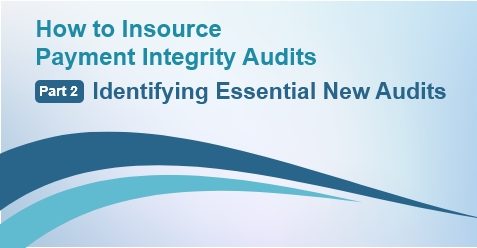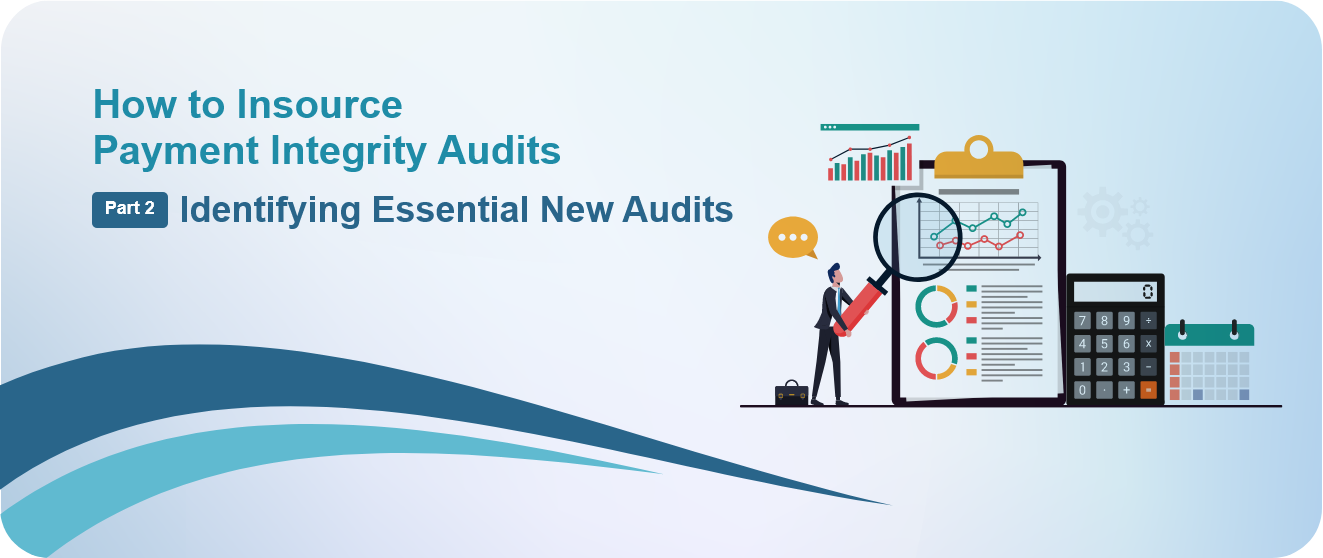
How to Insource Payment Integrity Audits

In the first part of our series, “How to Insource Payment Integrity Audits – Part 1: Maximizing What You Have” we explored the importance of optimizing your current audit processes and maximizing efficiency. If you haven’t read it yet, we recommend starting there to lay a solid foundation for your insourcing journey.
In this second installment, we will focus on identifying and prioritizing new audits that health plans should consider implementing. With the healthcare landscape constantly evolving, staying ahead means adapting your audit strategy to tackle emerging challenges and opportunities. This process involves strategic planning and careful implementation to ensure success.
Let’s dive in:
Identifying New Audits
When considering which audits to add to your repertoire, focus on areas that offer the highest potential return on investment (ROI) and align with your organization’s goals. Some key areas to consider include:
The BOT Model: A Strategic Approach

To efficiently implement new audits, consider adopting the BOT (Build, Operate, Transfer) model. This approach allows health plans to leverage external expertise while building internal capabilities (source).
Build
Start by investing in a comprehensive payment integrity platform that can handle multiple audit types. This platform should offer:
- Centralized document repositories
- AI-powered analytics
- Automated workflows
- Robust reporting capabilities
Operate
Initially, consider staffing the platform with augmented staff or completely outsourcing operations. This approach allows you to:
- Quickly implement new audits
- Benefit from external expertise
- Validate the ROI of new audit types
Transfer
Once the model is proven successful:
- Gradually transfer operations in-house
- Train internal staff on the platform and audit processes
- Develop internal expertise and best practices
Prioritizing Audits
When deciding which audits to implement first:
- Focus on pre-payment accuracy to minimize costly post-payment recoveries.
- Prioritize audits that address your organization’s specific pain points.
- Consider regulatory requirements and compliance needs.
- Evaluate the potential impact on provider relationships.
Leveraging Technology
To enhance the efficiency of your new audits:
- Implement robotic process automation (RPA) for routine tasks (source)
- Utilize AI and machine learning for predictive analytics and anomaly detection
- Employ data analytics for continuous risk assessment and audit planning
- Evaluate the potential impact on provider relationships.
By strategically implementing new audits using the BOT model and leveraging advanced technologies, health plans can significantly enhance their payment integrity efforts. This approach not only improves financial outcomes but also positions the organization for long-term success in an increasingly complex healthcare landscape.
To achieve successful insourcing of payment integrity audits, health plans need a comprehensive platform that can streamline and enhance their audit processes. An ideal platform should offer:
- Centralized data management
- Advanced analytics with AI and machine learning capabilities
- Automated workflows
- Customizable rules and edits
- Comprehensive reporting and insights
- Integration with existing systems
Such a platform can help health plans maximize efficiency, reduce costs, and improve overall audit performance across the organization.
AuditShark, a cloud-based healthcare audit platform, offers all these features and more. It’s designed to help health plans manage their internal audit functions, maximize efficiency, accuracy, and margins. With AuditShark, you can scale your audit capabilities, reduce point-solution fatigue, and get more out of your investments by leveraging a single platform across the enterprise. Take control of your healthcare audits and unlock significant cost savings with AuditShark.
See our AuditShark solution page to learn more





